Teachings
Awam symbol of Compassion and Wisdom
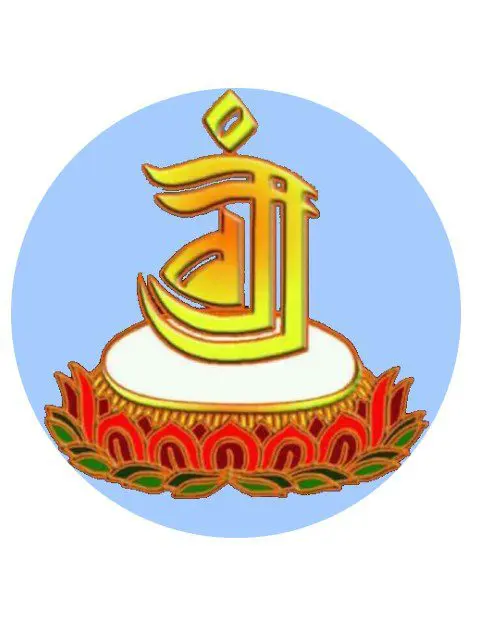
Guru Padmasambhava
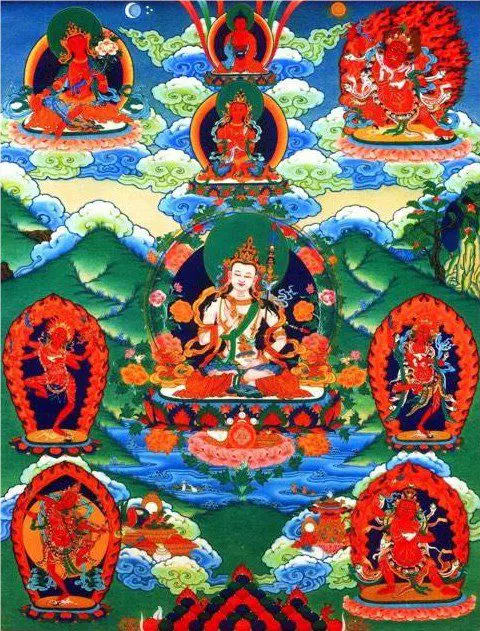
Advice from Guru Rinpoche
“No need to make offerings or praise; set aside all accumulating; simply let devotion flood your body, speech and mind, and pray, pray with these seven lines.” -
ཧཱུྃ༔ ཨོ་རྒྱན་ཡུལ་གྱི་ནུབ་བྱང་མཚམས༔
hung, orgyen yul gyi nubjang tsam
Hūṃ! In the north-west of the land of Oḍḍiyāna
པདྨ་གེ་སར་སྡོང་པོ་ལ༔
pema gesar dongpo la
In the heart of a lotus flower,
ཡ་མཚན་མཆོག་གི་དངོས་གྲུབ་བརྙེས༔
yatsen chok gi ngödrub nyé
Endowed with the most marvellous attainments,
པདྨ་འབྱུང་གནས་ཞེས་སུ་གྲགས༔
pema jungné shyé su drak
You are renowned as the ‘Lotus-born’,
འཁོར་དུ་མཁའ་འགྲོ་མང་པོས་བསྐོར༔
khor du khandro mangpö kor
Surrounded by many hosts of ḍākinīs
ཁྱེད་ཀྱི་རྗེས་སུ་བདག་བསྒྲུབ་ཀྱི༔
khyé kyi jesu dak drub kyi
Following in your footsteps,
བྱིན་གྱིས་བརླབ་ཕྱིར་གཤེགས་སུ་གསོལ༔
jingyi lab chir shek su sol
I pray to you: Come, inspire me with your blessing!
གུ་རུ་པདྨ་སིདྡྷི་ཧཱུྃ༔
guru pema siddhi hung
guru pema siddhi hūṃ[1]
ཞེས་པས་ཡང་ཡང་གསོལ་བ་ཐོབ༔
Pray in this way, over and over again.
Tibetan Buddhism is based on the teachings of Shakyamuni Buddha, Padmasambhava, and other significant Buddhist teachers. The meditation practices foster a peaceful mind. In this way, they offer a profound refuge for people.
The teachings are grouped into three ‘vehicles’ or ‘Yanas’. These vehicles are Mahayana, Vajrayana, and Dzogchen. Each Yana uses different methods to facilitate a peaceful mind, compassion, and wisdom.
One method is the mantra meditation practices of the ‘Three or Four Roots’. H.H. Khenchen Lama Rinpoche strongly encourages doing these meditation practices daily.
H.H. Khenchen Lama Rinpoche uses Four Roots as he considers Dakinis and Protectors as two ‘Roots’. However, in the methods that use the ‘Three Roots’, Dakinis and Protectors are regarded as one “Root’.
The Four Roots are:

Guru Rinpoche
Padmasambhava also known as Guru Rinpoche
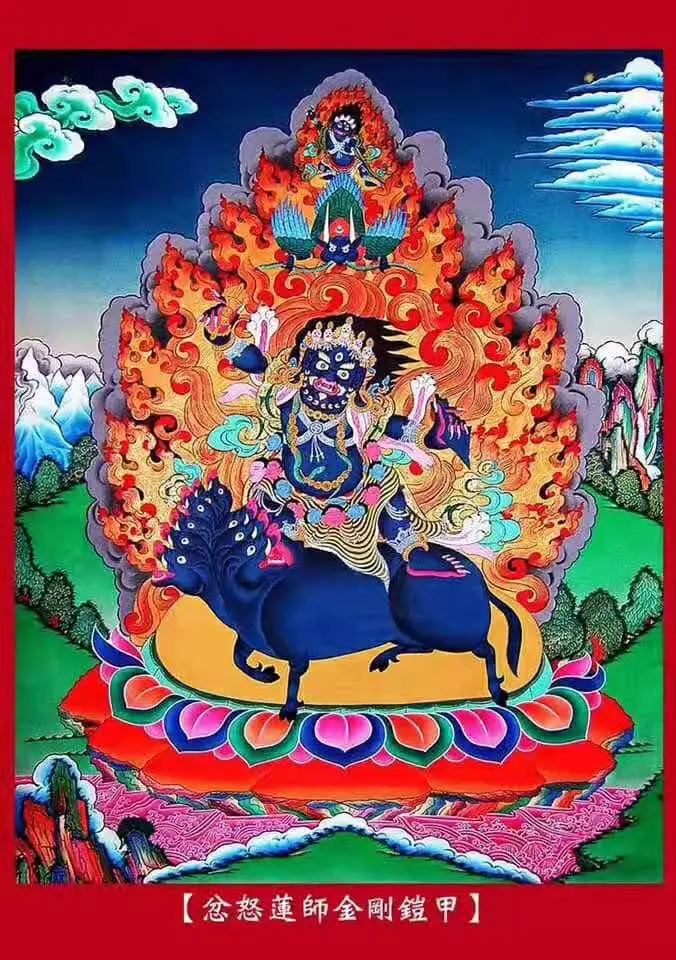
Yidam
Dorje Gotrab
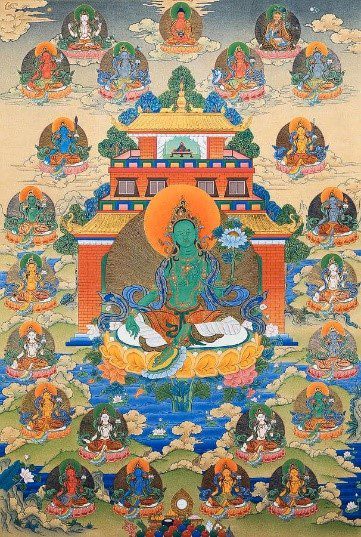
Dakini
Tara

Protector
King Gesar
Dakinis refer to all women. Examples of Dakini meditation practices, are Yeshe Tsogyal, the 21 Taras, Green Tara, White Tara, Kurukulla, Mandarava or Ekajati These meditations focus on enlightened women who benefit beings. The Dakinis are the ‘holders’ of the teachings.

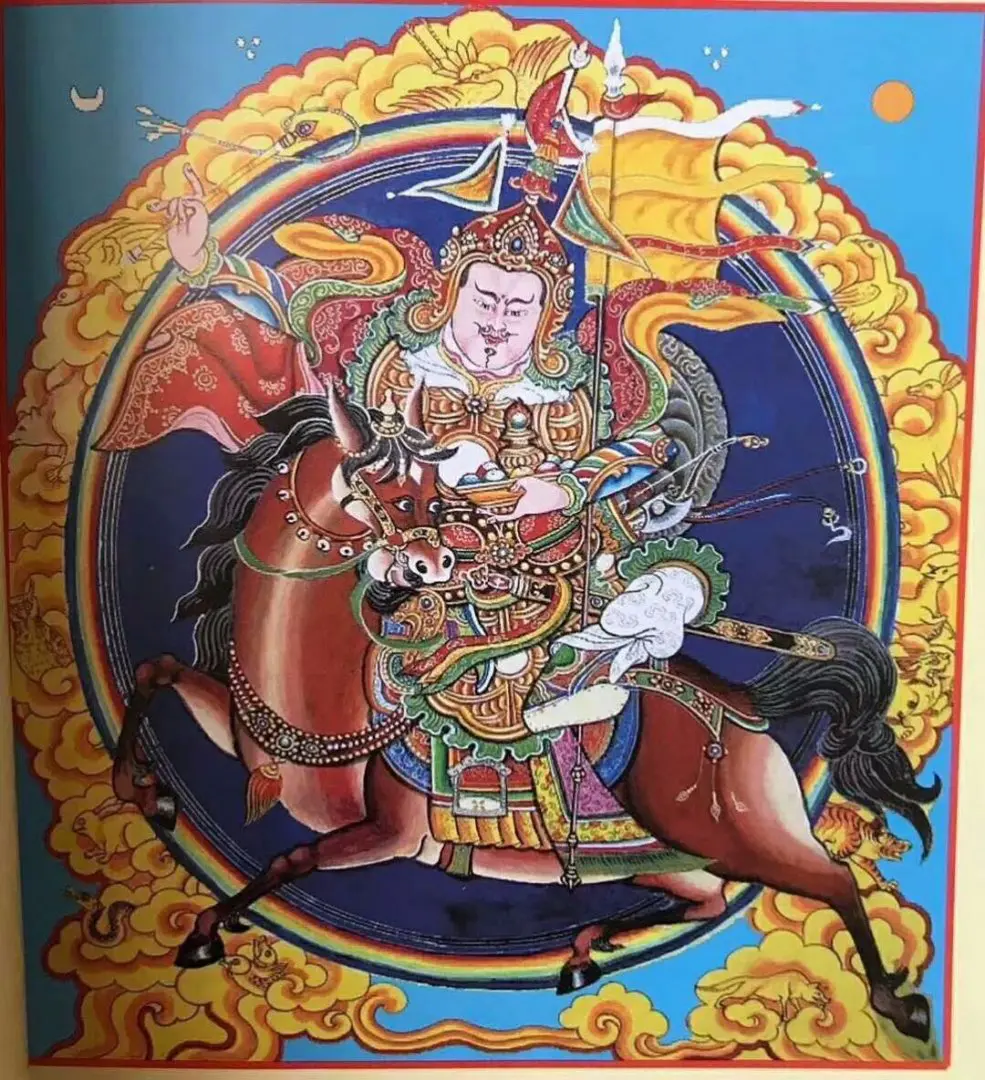
King Gesar
King Geser
In H.H. Khenchen Lama Rinpoche’s Padling Terser lineage, King Gesar is the protector.
Gesar Norbu Dradul was King of Ling in the 12th C.E. King Gesar is considered an emanation of Padmasambhava. He was strongly committed to benefiting others. His activities have become epic and he is respected as a hero in many areas in Asia. Scholars in the East and West have indicated that there are more books written about his heroic epic life than any other hero in the world.
To learn more about King Gesar, please enjoy many of the books about his activities. Here is one example.
Penick, D.J. (2009). Crossings on a Bridge of Light: The Songs and
Deeds of Gesar, King of Ling as He Travels to Shambhala Through
the Realms of Life and Death. Mountain Treasury Press. Boulder, CO.

H.H. Khenchen Lama Rinpoche has authored many writings. His first book in English is “Tibetan Meditation Yoga: Ancient Teachings Living Today.”
Rinpoche’s intention with this book was to make the teachings accessible to beginners as well as long-time practitioners. Everyone will find helpful gems in his writing.

If you are interested in more information, please contact the Awam Tibetan Heart Center at [email protected].
